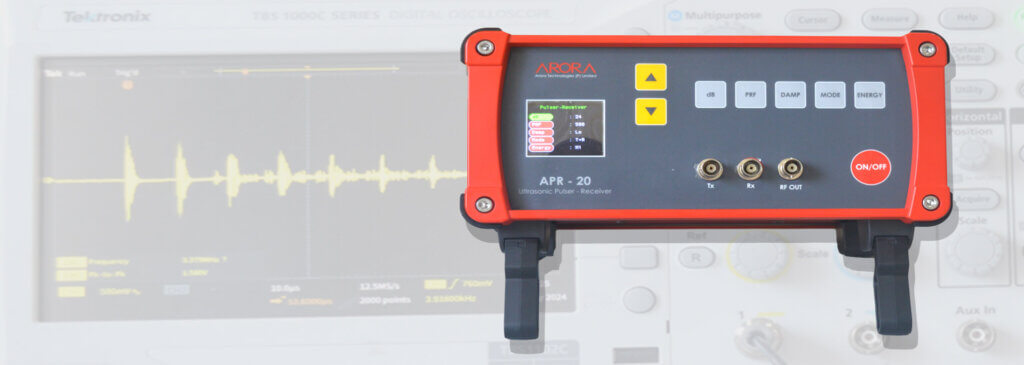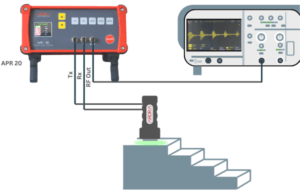
Ultrasonic pulser-receivers are indispensable tools for general-purpose ultrasonic testing. Working in tandem with appropriate transducers and an oscilloscope. They excel in flaw detection and thickness gauging across a wide array of metals. These devices offer a unique, cost-effective solution for various ultrasonic measurement needs.
What are Pulser Receivers?
Pulser-receivers play a pivotal role in nondestructive testing (NDT) by generating ultrasonic pulses that propagate into materials. When triggered, the pulser generates short, high-amplitude electrical pulses, which are then transmitted to an ultrasonic transducer. The transducer converts these electric pulses into short ultrasonic pulses. With low output impedance, the pulser section efficiently drives the transducer. The receiver section of the device converts the ultrasonic pulses back into electric pulses, amplifying the voltage signals produced by the transducer. The amplified radio frequency (RF) signal is then available for display or capture for signal processing.
Key Control Aspects
During operation, the pulser section can apply various attributes to the transmitted pulses, such as lengthening or damping them based on application needs. It can also vary the pulse voltage within a specified standard range. The receiver section boosts the signal (amplification) and filters it to reduce impedance and unwanted interference.
Operating Modes

Pulser-receivers operate in several modes, with through transmission and dual crystal mode being the most common. In through-transmission mode, a transmitting transducer sends ultrasonic waves through a material to a receiving transducer on the opposite side. In dual crystal mode, a second transducer receives and converts the ultrasonic pulse.
Applications and Advantages
Ultrasonic pulser receivers find extensive use in flaw detection, thickness measurement, and material characterization, where they measure sound velocity or attenuation to correlate with material properties like elastic modulus. They can also be used with a stepless gate and a spectrum analyzer to study frequency-dependent material properties or to characterize ultrasonic transducer performance.
How it Works
The pulser section generates short, high-amplitude electric pulses, which are converted into ultrasonic pulses by the transducer. The receiver section then amplifies the voltage signals produced by the transducer, making the RF signal available for display or signal processing.
In Summary
Ultrasonic pulser-receivers are versatile devices crucial for various applications in nondestructive testing. They offer high sensitivity for detecting surface and subsurface discontinuities, along with precise reflector position determination and flaw size and shape estimation. These devices are compatible with all types of probes, making them invaluable tools in the field of ultrasonic testing.









